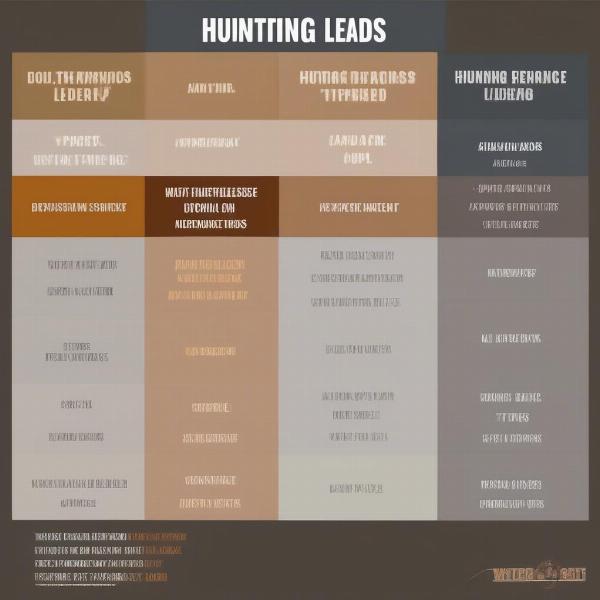Hunting dog leads are an essential piece of equipment for any hunter who works with a canine companion. The right lead can make the difference between a successful, enjoyable hunt and a frustrating one. Whether you’re tracking game through dense brush or waiting patiently for the perfect shot, a reliable lead will keep your dog safe and under control. Choosing the correct lead, however, can be a daunting task given the wide variety of options available. This article will guide you through the essential factors to consider when selecting hunting dog leads, ensuring you make the best choice for your dog and your hunting style.
Types of Hunting Dog Leads
There are several types of hunting dog leads, each designed for specific purposes and hunting styles. Understanding the differences will help you choose the most suitable lead for your needs.
Slip Leads
Slip leads are a popular choice for their simplicity and ease of use. They tighten around the dog’s neck when pulled, providing control without a collar. While convenient, they should be used with caution, especially with dogs prone to pulling, as they can cause discomfort or even injury if used improperly.
Check Cords
Check cords are similar to slip leads but with a fixed length, preventing them from tightening excessively. They offer more control than slip leads and are suitable for training and general hunting purposes.
Traditional Leather Leads
Traditional leather leads are known for their durability and classic aesthetic. They provide a secure grip and are comfortable for both the dog and handler. However, they can be heavier than other options and require regular maintenance.
Biothane Leads
Biothane leads are a modern alternative to leather, offering durability, water resistance, and easy cleaning. They are a popular choice for hunters who frequent wet or muddy terrain.
Key Considerations When Choosing a Hunting Dog Lead
Selecting the right hunting dog lead involves considering several factors, including your dog’s breed, size, temperament, and the specific hunting environment.
Dog’s Breed and Size
Larger, more powerful breeds require stronger, more durable leads than smaller breeds. Consider a heavy-duty leather or biothane lead for larger dogs, while a lighter check cord or slip lead may suffice for smaller breeds.
Temperament
For dogs that tend to pull, a well-fitted harness and a lead with a comfortable handle are recommended. Avoid using slip leads on dogs that pull excessively, as they can cause discomfort or injury.
Hunting Environment
The terrain and vegetation in your hunting area should also influence your choice of lead. For dense brush, a shorter, more durable lead is advisable to prevent snagging. In open fields, a longer lead may be preferable to allow your dog more freedom. gun dog lead
 Hunting Dog Lead Materials Comparison
Hunting Dog Lead Materials Comparison
Lead Length and Material
The length and material of your hunting dog lead are crucial for both safety and effectiveness.
Lead Length
Choose a lead length that provides adequate control while allowing your dog enough freedom to work effectively. Shorter leads are suitable for close-quarters hunting or training, while longer leads are better for open terrain. gun dog leads
Lead Material
Leather, nylon, and biothane are common materials used in hunting dog leads. Leather is durable and comfortable but requires maintenance. Nylon is lightweight and affordable but less durable than leather. Biothane offers the best of both worlds: durability, water resistance, and easy cleaning.
Training with Hunting Dog Leads
Training your dog to respond effectively to commands while on a lead is essential for a successful hunt. bird dog training supplies
-
Consistency is key: Use the same commands and techniques every time you train your dog on a lead.
-
Positive reinforcement: Reward your dog with praise and treats when they respond correctly to your commands.
-
Start slowly: Begin training with short sessions and gradually increase the duration and difficulty as your dog progresses.
Expert Advice from Dr. Emily Carter, Canine Behaviorist
“Choosing the right hunting dog lead is paramount for a safe and successful hunting experience. A well-fitted, appropriate lead enhances control, promotes effective communication between handler and dog, and minimizes the risk of injury in challenging hunting environments.”
Conclusion
Choosing the right hunting dog lead is crucial for both your safety and the success of your hunt. By carefully considering your dog’s breed, size, temperament, and the specific hunting environment, you can select the perfect lead to ensure a rewarding and enjoyable experience. muff dog
FAQ
-
What is the best type of lead for a beginner hunter? A check cord is a good starting point for beginners, offering a balance of control and flexibility.
-
How do I clean a leather hunting dog lead? Use a leather cleaner and conditioner specifically designed for dog accessories.
-
What length of lead is best for upland bird hunting? A 30-foot check cord is a common choice for upland bird hunting.
-
Can I use a retractable lead for hunting? Retractable leads are generally not recommended for hunting due to safety concerns and limited control. dog danish
-
How often should I replace my hunting dog lead? Inspect your lead regularly and replace it if you notice any signs of wear or damage.
About ILM Dog: ILM Dog is your comprehensive resource for expert advice on dog breeds, health, training, nutrition, grooming, and much more. We’re dedicated to helping dog owners worldwide provide the best possible care for their canine companions. Whether you’re interested in learning about the right hunting dog leads or need advice on any other aspect of dog care, we’re here to help. Contact us at [email protected] or +44 20-3965-8624 for personalized guidance.